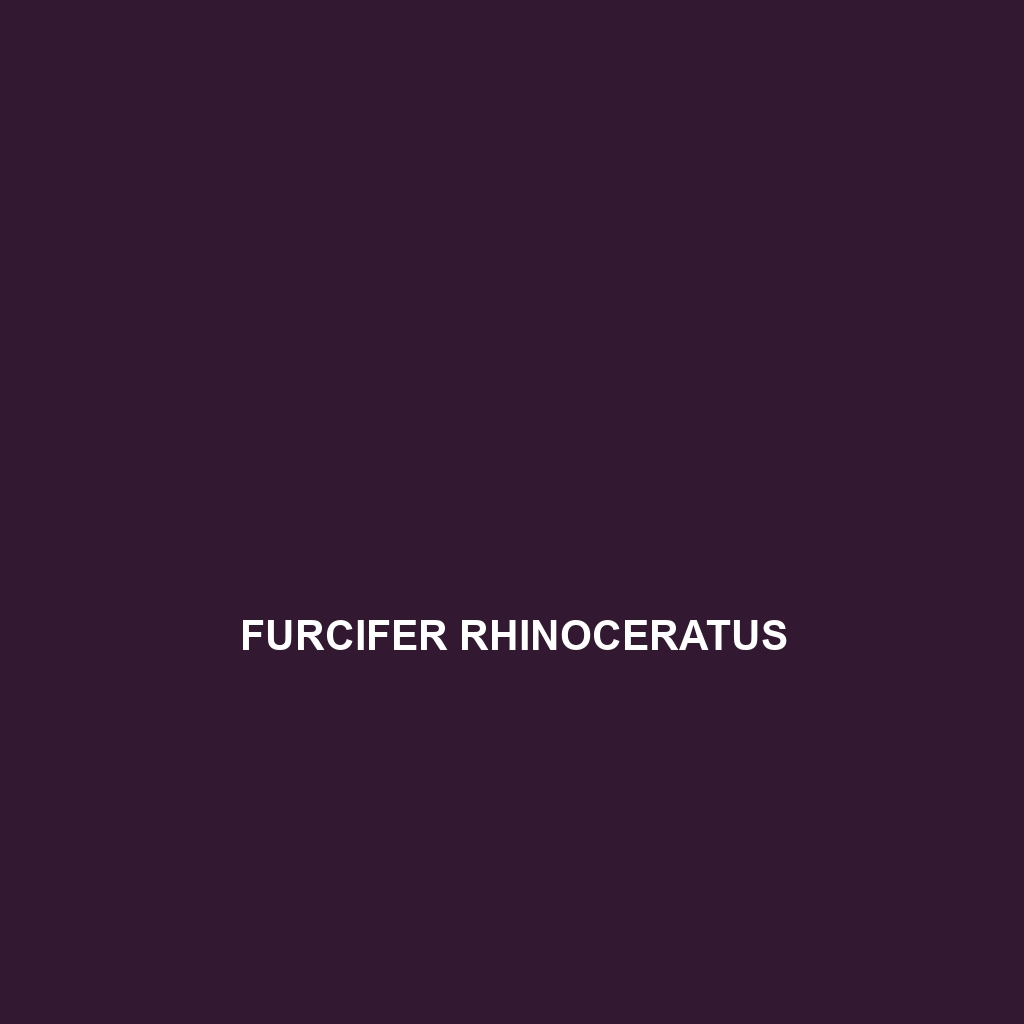-

Furcifer polleni
Common Name Furcifer polleni Scientific Name Furcifer polleni Habitat Furcifer polleni, commonly known as Pollens’ chameleon, primarily inhabits the lush rainforests and humid lowland forests of Madagascar. This species thrives in warm, tropical climates, characterized by high humidity and abundant rainfall, making these environments ideal for its survival. It is often found in dense vegetation,…
-

Furcifer rhinoceratus
Common Name Furcifer rhinoceratus Scientific Name Furcifer rhinoceratus Habitat Furcifer rhinoceratus, commonly known as the Rhino Chameleon, is primarily found in the lush rainforests and temperate forests of Madagascar. This species thrives in humid, tropical environments characterized by dense vegetation and rich biodiversity. They prefer areas with ample foliage, which provides both protection from predators…
-

Furcifer petteri
Discover the vibrant Furcifer petteri, a striking chameleon native to Madagascar, known for its remarkable color-changing ability, unique helmet-like crest, and diurnal behaviors. This insectivorous species, found in lush rainforests and savannas, plays an essential role in maintaining ecological balance and biodiversity in its habitat.
-

Furcifer pardalis
Discover the vibrant Panther Chameleon (Furcifer pardalis), renowned for its remarkable color-changing ability and striking size of 20 to 25 inches. Native to Madagascar’s tropical rainforests, this insectivorous species is an adept climber, playing a crucial role in its ecosystem by controlling insect populations and supporting the food web.
-

Furcifer oustaleti
Furcifer oustaleti, commonly known as the Oustalet’s chameleon, is a large, vibrant species native to Madagascar, recognized for its remarkable color-changing ability, robust build, and prehensile tail. Primarily nocturnal and insectivorous, this species thrives in diverse habitats, playing a vital role in its ecosystem by helping control insect populations and participating in plant pollination.
-

Furcifer nicosiai
Discover the captivating Furcifer nicosiai, or Nicosia’s chameleon, known for its vibrant colors and unique skin texture, thriving in Madagascar’s lush rainforests. An insectivore with remarkable color-changing abilities, this endangered species plays a vital role in its ecosystem by regulating insect populations and enhancing biodiversity.
-

Furcifer minor
Introducing the Furcifer minor, or lesser chameleon, an exceptional insectivore native to Madagascar’s lush rainforests, measuring 15 to 20 cm in length with remarkable color-changing abilities for communication and camouflage. This vulnerable species plays a crucial role in its ecosystem by controlling insect populations and showcasing unique adaptations for survival.
-

Furcifer monoceras
Furcifer monoceras, commonly known as the Madagascar chameleon, is an insectivorous, arboreal species found in the tropical rainforests of Madagascar, characterized by its vibrant color changes, prominent casque, and prehensile tail. This fascinating reptile plays a crucial role in its ecosystem as both a predator and prey, contributing to the health of biodiversity in its…
-

Furcifer major
Furcifer major, or Madagascar chameleon, is a vibrant insectivorous species known for its remarkable color-changing ability and distinct crest, thriving in the humid rainforests of Madagascar. Growing up to 12 inches long, this chameleon plays a vital role in its ecosystem by controlling insect populations while being an important prey for larger predators.
-

Furcifer lateralis
Sharptooth Chameleon (Furcifer lateralis) The Furcifer lateralis, or Sharptooth Chameleon, is a vibrant, medium-sized chameleon native to the lush forests of Madagascar, known for its remarkable ability to change color and its crucial role in controlling insect populations. With a range of striking hues and complex mating displays, this species thrives in diverse habitats, including…
Search
Popular Posts
-
Gerrhopilus oligolepis
Discover the Gerrhopilus oligolepis, a nocturnal insectivore native to tropical and subtropical regions, known for its slender body, distinctive dorsal spots, and remarkable camouflage. This species plays a crucial role in its ecosystem by regulating insect populations and serves as an important food source for larger predators.
-
Gerrhopilus mirus
Gerrhopilus mirus, or the remarkable snake, is a small, nocturnal insectivore primarily found in the tropical rainforests of Southeast Asia. With its distinctive brown and yellow coloration, this adaptable species plays a crucial role in controlling insect populations and maintains a vital ecological balance within its habitat.
-
Gerrhopilus mcdowelli
Common Name Gerrhopilus mcdowelli Scientific Name Gerrhopilus mcdowelli Habitat Gerrhopilus mcdowelli is primarily found in the lush, humid environments of tropical rainforests, particularly within the regions of Southeast Asia. These serpentine creatures thrive in dense foliage near streams and rivers, enjoying moist conditions that support their biological needs. Their habitat preference also extends to nearby…
Categories
Tags
animal adaptations (790) animal behavior (4790) animal reproduction (803) behavior (919) biodiversity (7114) conservation (1670) conservation efforts (1535) conservation status (4944) diet (2099) echolocation (822) ecological balance (1622) ecological role (1495) ecology (791) ecosystem (1468) ecosystem role (2695) ecosystem roles (695) endangered species (2423) environmental conservation (716) habitat (3249) habitat conservation (957) Habitat Destruction (1079) habitat loss (3048) insectivorous reptiles (740) IUCN Red List (1521) lizard reproduction (696) nocturnal animals (2708) nocturnal behavior (2315) nocturnal reptiles (681) physical characteristics (1998) reproduction (2858) reptile conservation (1001) rodent (677) rodent species (1325) seed dispersal (2078) Seed Disperser (962) small mammals (1164) snake diet (723) snake reproduction (773) South America (791) species description (714) tropical forests (938) Vulnerable Species (4534) wildlife (2507) wildlife conservation (4699) wildlife protection (881)




